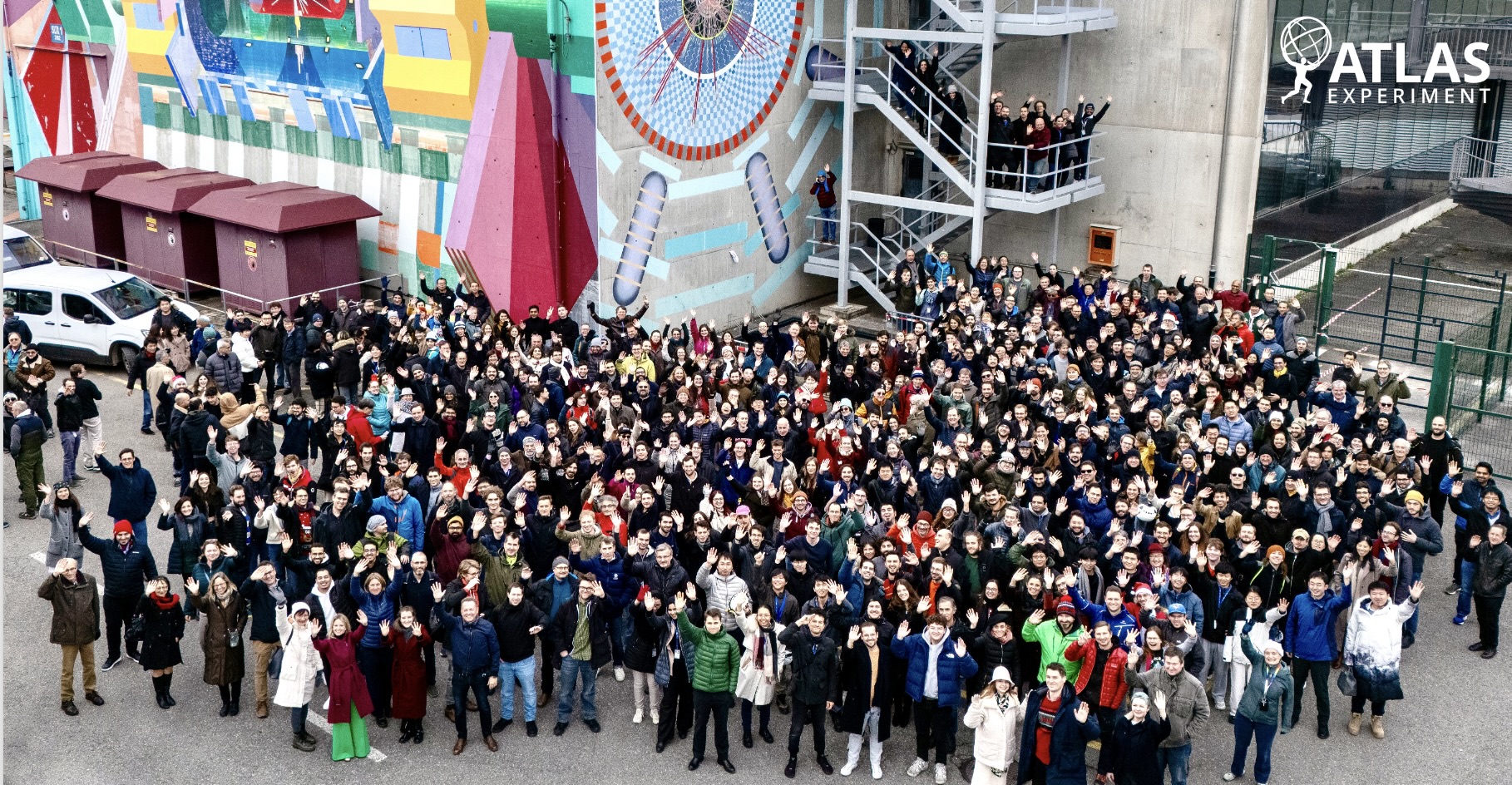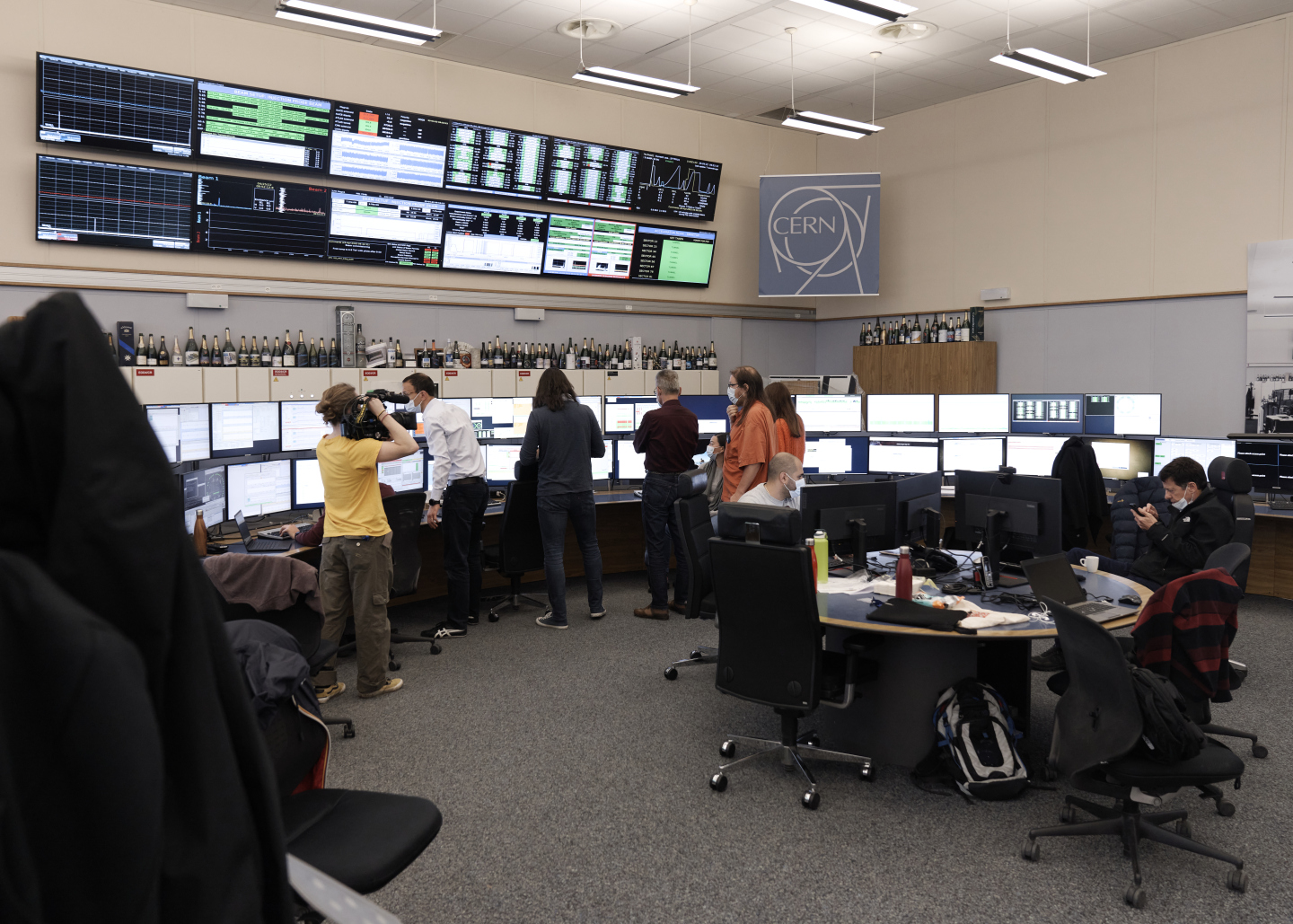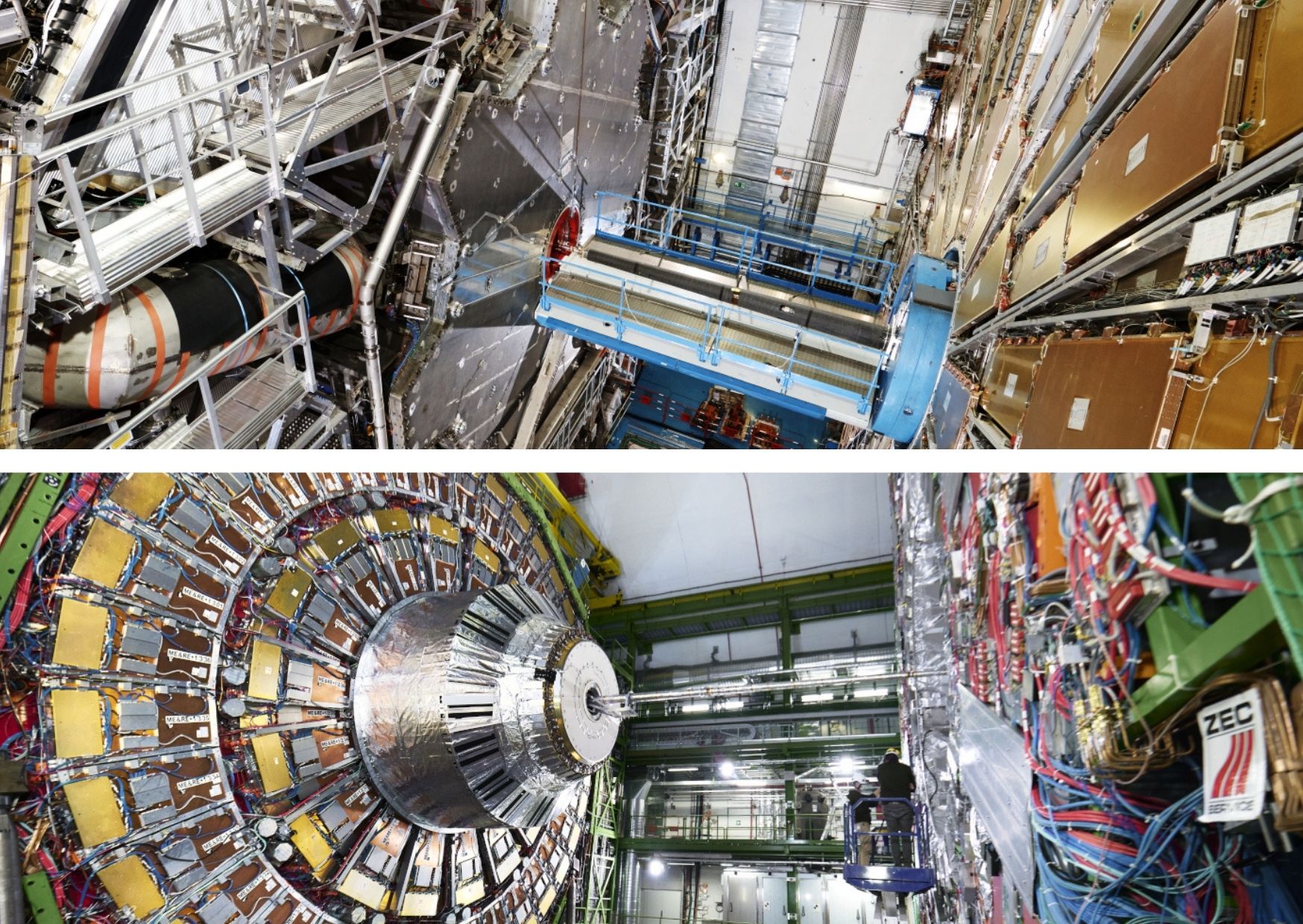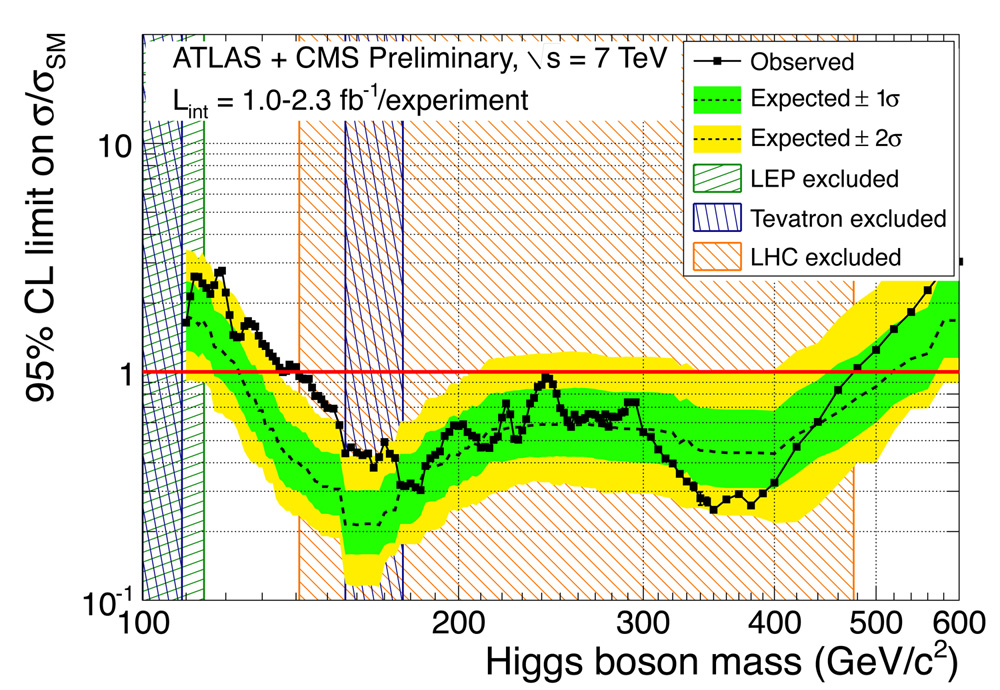ATLAS Collaboration awarded Breakthrough Prize in Fundamental Physics
7 April 2025 | By
The ATLAS Collaboration at CERN has been awarded the Breakthrough Prize in Fundamental Physics for its pioneering studies of the high-energy collisions from the Large Hadron Collider (LHC). The prize, shared with the ALICE, CMS and LHCb Collaborations, recognises the extraordinary contributions of 13,508 international researchers who have pushed the boundaries of particle physics to unprecedented heights. The prize celebrates the collaborative effort to establish the Brout-Englert-Higgs mechanism of spontaneous electroweak symmetry breaking, test the Standard Model with remarkable precision, uncover rare and exotic particle interactions, and search for new physics phenomena that could reshape our understanding of the universe. Through the CERN & Society Foundation, the prize will fund PhD scholarships to support the next generation of ATLAS scientists as they build on this legacy of discovery.
“The Breakthrough Prize is a testament to the dedication and ingenuity of the ATLAS Collaboration and our colleagues across the LHC experiments,” says Stephane Willocq, ATLAS Spokesperson (University of Massachusetts Amherst). “In particular, Run 2 was a transformative period for particle physics. The results we achieved with its dataset have deepened our understanding of the Higgs boson, the Standard Model and the fundamental symmetries of Nature.”
Probing new frontiers with Run 2
Let’s turn back the clock to 2012, when the ATLAS and CMS Collaborations announced the discovery of a brand-new particle: the Higgs boson. This groundbreaking achievement earned ATLAS, CMS, and LHC scientists, including former ATLAS spokespeople Peter Jenni and Fabiola Gianotti, the 2013 Special Breakthrough Prize in Fundamental Physics. The discovery of this final missing piece of the Standard Model was a triumph decades in the making, yet it marked only the beginning of the ATLAS Collaboration’s rich and ongoing scientific journey.
The second run of the LHC (2015–2018) would be a monumental leap forward for high-energy physics. For the first time, protons would collide at a centre-of-mass energy of 13 TeV — 60% higher than that during Run 1 and, at the time, the highest energy ever achieved in a particle collider. It would be a true test of the accelerator’s capabilities, and would call on precise operational expertise to keep it running at peak performance. Meanwhile, the ATLAS experiment had also undergone several upgrades during the LHC’s first long shutdown, including new event-selection capabilities and the installation of the Insertable B-Layer (IBL). The IBL, a pixel layer equipped with radiation-hard sensors positioned just 3.3 cm from the beam, significantly enhanced the resolution of the ATLAS inner tracking detector.
The stage was set and teams were poised for action — but what would Nature have in store? Over the following decade, thanks to the LHC’s stellar performance and ATLAS’ record data-taking and data-quality efficiency, physicists would venture into completely uncharted territories in particle physics.
The prize, shared with the ALICE, CMS and LHCb Collaborations, recognises the extraordinary contributions of 13,508 international researchers who have pushed the boundaries of particle physics to unprecedented heights.
Mapping the Higgs boson
The Breakthrough Prize specifically recognised ATLAS for its precise measurements of the Higgs boson’s properties and its exploration of the Brout-Englert-Higgs (BEH) mechanism. “Each particle’s relationship with the Higgs boson is unique, providing critical tests of the Standard Model,” says Andreas Hoecker, former ATLAS Spokesperson (CERN). “Our goal with Run 2 was to understand as many of these as we could, creating a detailed map of the properties and interactions of the Higgs boson.”
The Collaboration made tremendous strides, observing and measuring all of the primary production and decay mechanisms of the Higgs boson, enabling ATLAS to derive the predicted non-universal, mass-dependent interaction strengths with other particles. These results emerged as early as 2018, with ATLAS detecting the Higgs boson decaying into b-quarks — a process accounting for more than half of all Higgs decays — and observing its rare associated production with top-quark pairs. This latter measurement provided direct insight into the top-quark Yukawa coupling, a key aspect of the Higgs mechanism. More recently, ATLAS measured the Higgs-boson mass with 0.09% precision and set direct constraints on its charm-quark Yukawa coupling, showcasing how a deeper understanding of the dataset and improved algorithms have led to significant advancements in Higgs physics.
“These achievements also underscore the transformative power of Run 2 in science,” says Guillaume Unal, ATLAS Deputy Spokesperson (CERN). “With just a few short years of data-taking, we were able to confirm the BEH mechanism of electroweak symmetry breaking and deepen our understanding of how particles acquire mass.”
Entering the precision era
The 13 TeV era saw a surge in the breadth and depth of ATLAS’ physics results. To date, the Collaboration has released 408 papers using the full Run-2 dataset, along with a similar number of results based on partial datasets. ATLAS observed numerous rare processes for the first time, with each iteration of analysis delivering more refined and precise results. This progress is driven not only by the sheer volume of data collected but also by improved reconstruction algorithms and the adoption of advanced analysis techniques, most prominently the widespread adoption of machine learning algorithms.
Among the many Standard Model results, ATLAS greatly expanded the understanding of the strong and electroweak forces. The Collaboration observed the simultaneous production of three W bosons and the production of W-boson pairs through the interaction of two photons — both processes that test the very foundations of the Standard Model. ATLAS also made the first observation of four-top-quark production, a process 4,000 times rarer than Higgs boson production, probing the boundaries of quantum chromodynamics (QCD) and the top quark’s role in the Standard Model.
“Run 2 also demonstrated the remarkable precision capabilities of the ATLAS experiment,” says Stephane. “From measuring the strong force coupling strength with 0.8% precision to the first observation of quantum entanglement at high energy, we pushed the boundaries of what was thought possible at the LHC.”
“The Breakthrough Prize is a testament to the dedication and ingenuity of the ATLAS Collaboration and our colleagues across the LHC experiments,” says Stephane Willocq, ATLAS Spokesperson.
While the Standard Model has so far withstood ATLAS’ rigorous testing, the absence of new particles at the TeV scale remains a mystery. Using 13 TeV data, ATLAS conducted extensive searches for new phenomena, including supersymmetry, heavy resonances and dark matter, setting stringent limits on these scenarios. Innovative techniques, such as jet substructure analysis and machine learning algorithms, enhanced the sensitivity of these searches, allowing researchers to explore uncharted territories in the high-energy frontier.
“While we’ve yet to find compelling evidence of new physics phenomena, these searches provide crucial direction for the field,” says Anna Sfyrla, ATLAS Deputy Spokesperson (University of Geneva). “They challenge us to rethink what lies beyond the Standard Model, explore new avenues and develop ever more inventive approaches. This mentality will be crucial as we tackle increasingly difficult searches for elusive new physics phenomena.”
Of course, Run 2 was about more than just colliding protons. ATLAS recorded its very first xenon-xenon collisions, and the highest-energy lead-lead collisions. These “heaviest” of collisions allowed researchers to observe one of the “lightest” processes in Nature, as physicists reported the first direct observation of light-by-light scattering in ultra-peripheral collisions. This has since developed into a growing field of study, offering opportunities to advance the physics of electroweak interactions and the search for new phenomena.
The next breakthrough
“The successes of Run 2 showcase the ingenuity of the ATLAS Collaboration — not only in collecting data with a detector of outstanding precision, but also in our relentless drive to improve our understanding of it,” says Andreas. “Many of the analyses described here were years in the making, requiring the development of pioneering techniques and advanced reconstruction methods. The fresh approaches evident in the research highlight an unwavering commitment to pushing the boundaries of scientific exploration.”
While the ATLAS Collaboration celebrates the recognition of the Breakthrough Prize, its focus remains firmly on the future. LHC Run 3 is currently underway and preparations for the High-Luminosity LHC are advancing rapidly. “Although Run 2 still has much to reveal, and analyses on the dataset are ongoing, the LHC’s journey is already taking ATLAS into uncharted waters,” concludes Stephane. “The HL-LHC is set to deliver 10 times more data in its lifetime, up to 2041. We are now preparing the ATLAS detectors of the future — designed to harness these unprecedented data and further push our understanding of the universe’s fundamental building blocks.”
Learn more
- A transformative leap in physics: ATLAS results from LHC Run 2, ATLAS Feature, 7 April 2025
- The LHC experiment collaborations at CERN receive Breakthrough Prize, CERN Press, 7 April 2025
- Breakthrough Prize Announces 2025 Laureates, News, 5 April 2025




